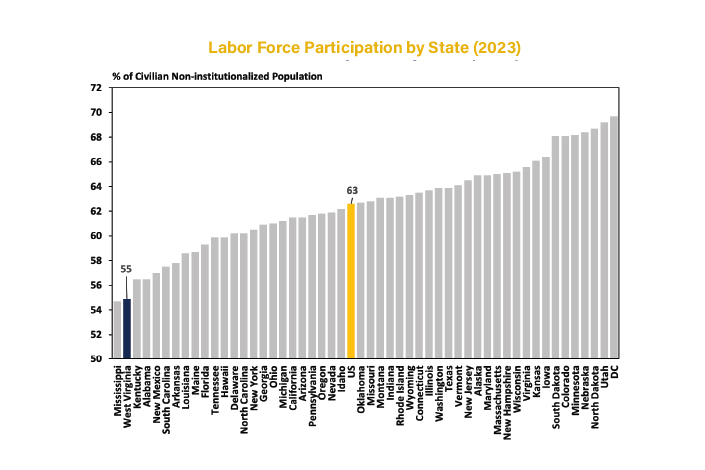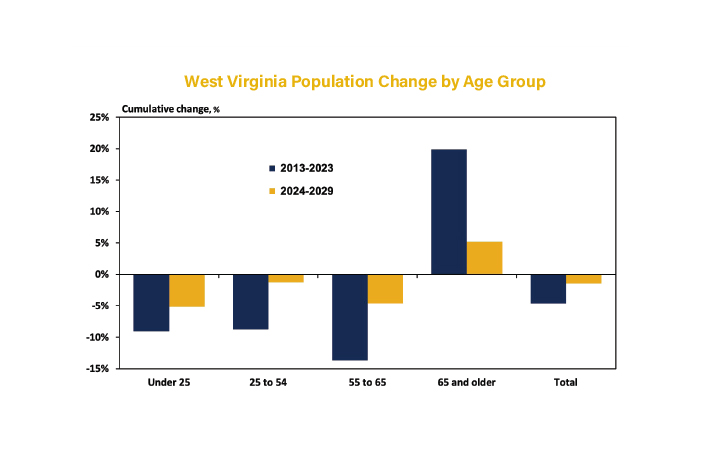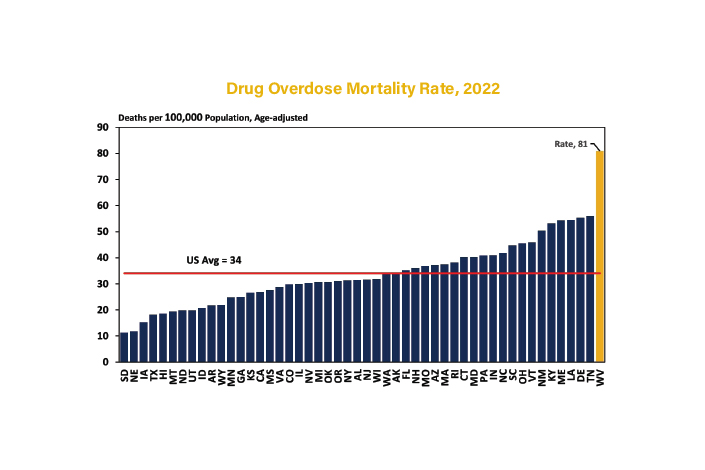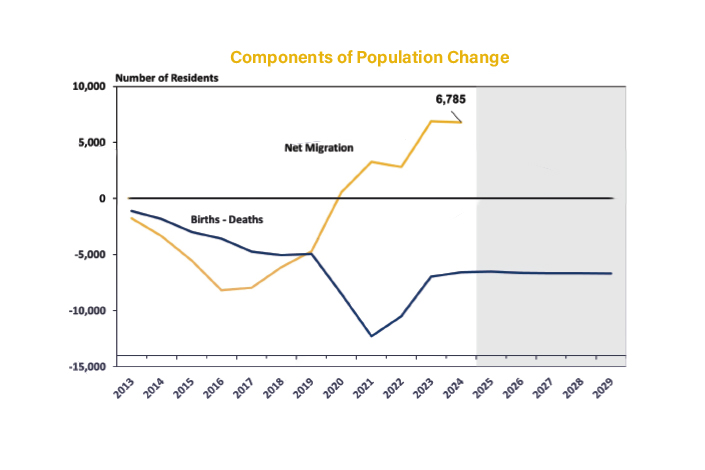Labor Force Participation and In-Migration
By John Deskins

One of the most significant economic development challenges West Virginia faces is a low rate of labor force participation. West Virginia’s labor force participation rate is the second lowest in the country, and the state has been at or near the bottom for decades. This labor force participation deficit adversely affects many facets of the state’s economy and virtually all industries.
Unemployment
A common misunderstanding is that unemployment is a widespread issue in West Virginia. However, this is not the case. The state’s unemployment rate has been at or near historic lows for the past few years. It is key to remember that to be considered unemployed, one must be without a job and actively looking for work. For example, a person serving as a stay-at-home parent, someone in school full time or a retiree is not considered unemployed.
Labor Force Participation
While the state’s labor market is tight in the short-run context of the unemployment rate, this figure only provides a partial figure of labor market health. As such, one should examine the labor force participation rate, in conjunction with the jobless rate, for a more accurate depiction of West Virginia’s labor market. The labor force participation rate captures the share of the adult population that wants to work, regardless of whether an individual holds a job currently or is looking for employment. The labor force participation rate is generally more of a long-run descriptor of the state’s underlying labor market conditions, whereas the unemployment rate is more focused on short-run cyclical movements in economic conditions.
West Virginia’s labor force participation rate is 55%. The state has been at or near the bottom of this list since the U.S. Bureau of Labor Statistics began reporting this data series in the 1970s. On a positive note, the state’s rate has increased over the past couple of years, and the workforce participation gap with the nation has narrowed slightly.
Age Distribution
One factor behind West Virginia’s low rate of labor force participation is the fact that we have an older population compared to most of the U.S. The state’s median age stands more than three years above the national figure. Another sign of the state’s skewed age distribution is the fact that more than 21% of the state’s residents are aged 65 or older, exceeding the national figure by nearly 4%. As reported in a nearby figure, our state has aged significantly over the past decade. The number of West Virginians 65 and older has increased by nearly 20%. This trend is expected to continue for at least the next five years, albeit at a slower pace.
Age is not the only factor contributing to the state’s low rate of labor force participation. West Virginia also lags the nation significantly in terms of labor force participation for various specific age groups, such as ages 18 to 24, 25 to 55—prime working age—and 55 to 65.
Education and Health
Two important drivers of our state’s labor force participation deficit are poor educational and health outcomes. It is likely that some people in our state would like to work in an ideal scenario but lack proper education and/or job training and as such are not actively looking for work because they doubt that they will find satisfactory employment. Likewise, it is possible there are many West Virginians who would like to work but are unable to do so due to an adverse health condition. According to the U.S. Centers for Disease Control and Prevention (CDC), the state lags the nation significantly in terms of many health outcome measures and overall morbidity.
Drug Use
Another source of the state’s poor health outcome trends over the past decade or so has been the increased use of and death from opioid use and other drug overdoses. Indeed, the drug overdose rate in West Virginia was more than double the national average in 2022 according to the CDC. West Virginia’s drug overdose mortality rate, 81 deaths per 100,000 people, was more than 20 points higher than Tennessee, the state with the second-highest rate. While drug use creates incredible suffering for individuals and families, it serves as yet another economic development
impediment for the state overall.
Solutions
There is no easy solution to the labor force participation problem. Issues surrounding human capital—factors such as health, education/workforce preparedness and drug use—are long-term challenges that will not be fixed overnight. However, it is imperative more is done to find effective ways to improve these adverse outcomes, not only to enhance the attractiveness of the state to potential businesses but also to improve the lives of West Virginians in fundamental ways.
In-Migration
A solution that can help in a more immediate way is encouraging in-migration into West Virginia. Population change is driven by two factors: natural population change, defined as the number of births minus the number of deaths, and net migration. The key problem driving West Virginia’s population loss is that deaths outnumber births in the state, as reported in a nearby figure. This is driven by the overall age distribution of the state’s population, unsurprisingly.
The other component of population change—net migration—has improved considerably for West Virginia in recent years. As reported in the nearby figure, for the past five years West Virginia has seen more people move into the state than out of it. This figure does not differentiate between migrants coming from other U.S. states versus international migrants; however, the large majority of those moving into the Mountain State come from other states in the U.S. As of the most recent data, West Virginia observed nearly 7,000 residents moving in above the number moving out. While this was not enough to offset the natural population decline, it is a very encouraging sign.
Overall, encouraging the in-migration of younger workers can be an effective and relatively quick way to stem the state’s population losses, improve labor force participation, increase population density, make West Virginia more attractive to potential businesses and ultimately create a virtuous cycle in which good economic developments multiply.












